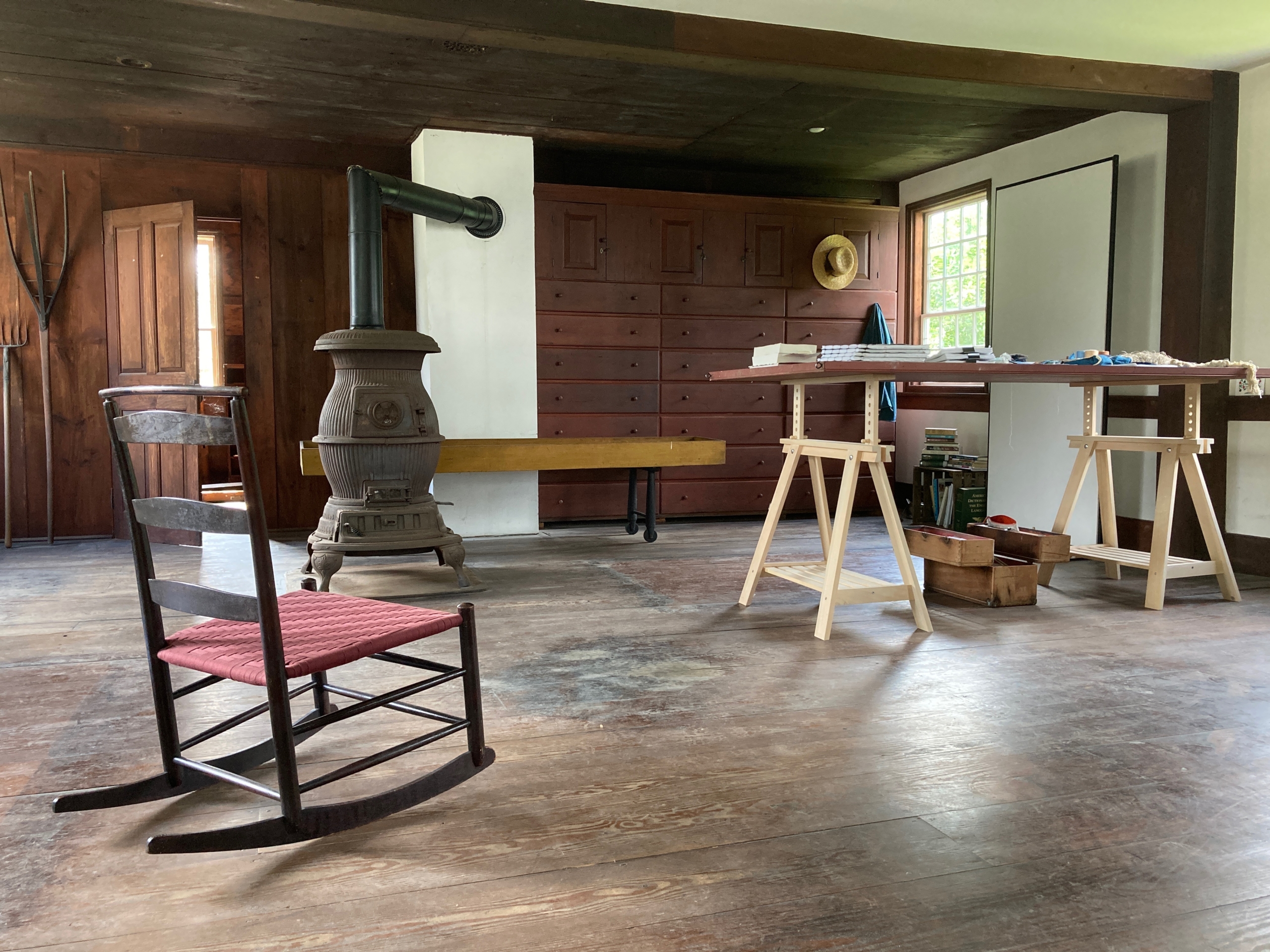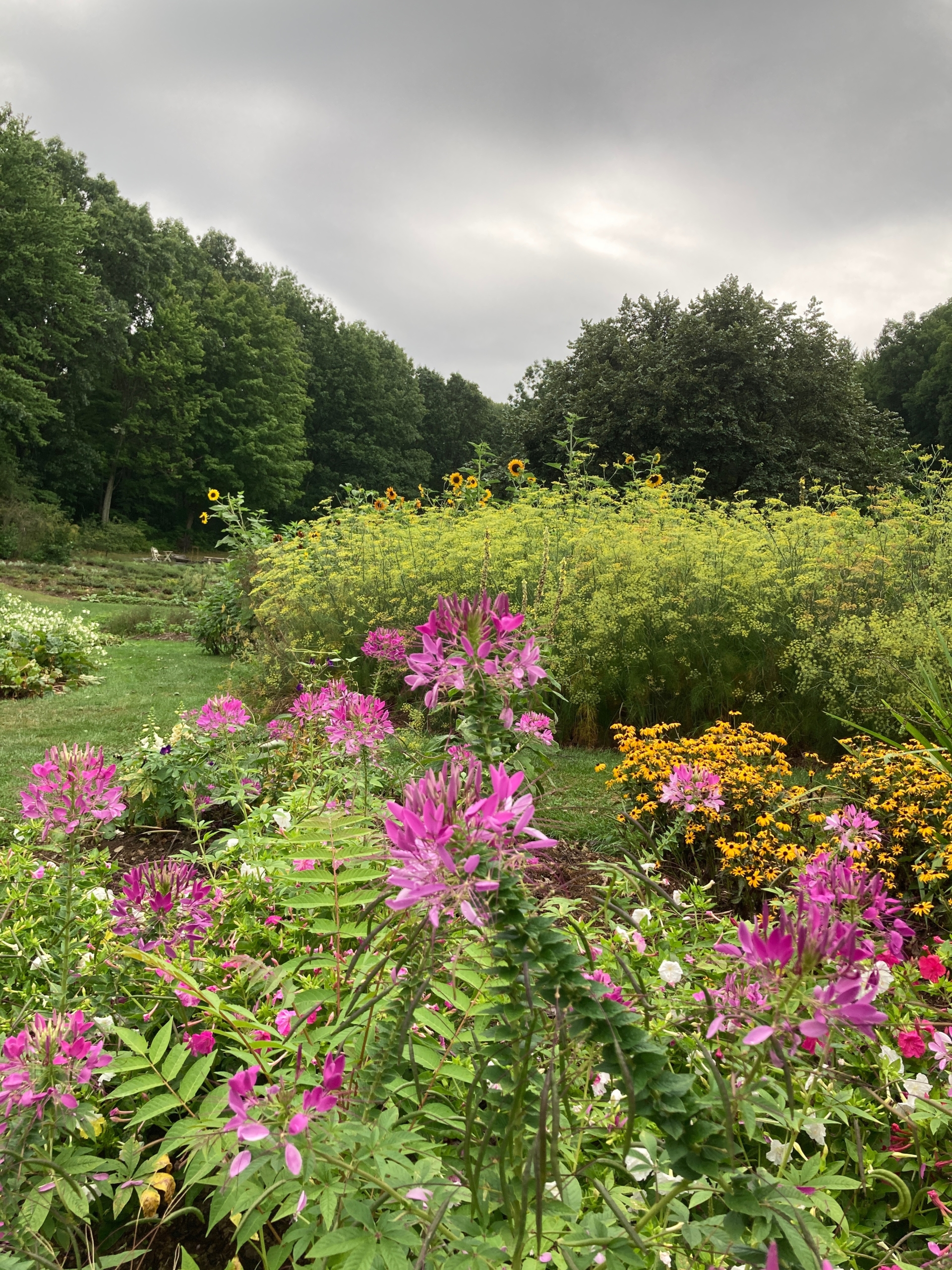We eagerly await the arrival of spring, more so this morning as snow flakes floated down to outline branches, leaves and stone walls as only newly fallen snow can do. We’ve had a few warm days sprinkled here and there in the past few weeks, but not enough to truly turn the corner and bring on full spring.
Saturday marks the start of the Spring Wildflower Festival at Bartholomew’s Cobble, as well as my third year as a wildflower guide there. On bitterly cold Saturdays in March, we guides gathered to discuss the geology of the site, the area’s ecology and the associated plant botany. We trudged through ice and snow over the trails, imagining the emergence of the green shoots and later lacy spring flowers. Bartholomew’s Cobble is a National Natural Landmark and we owe the rare diversity of the plant life to geological action that occurred 420 million years ago that results in both quartzite (acid) and marble (base) existing side by side–not a normal occurrence.

The “What’s In Bloom’ board at Bartholomew’s Cobble from May 2017
In preparation for my walks, I delve deeply into each plant’s characteristics, but I also search for the writings of others that found fleeting ephemerals.
Emily Dickinson, gardener and poet, reports of an 1848 spring walk to her friend Abiah Root:
“There were several pleasure parties of which I was a member, and in our rambles we found many and many beautiful children of Spring, which I will mention and see if you have found them — the trailing arbutus, adder’s tongue, yellow violets, liver leaf, bloodroot and many other small flowers.” 1
Mary Oliver recounts slipping away from school one spring day:
“I walked, all one spring day, upstream, sometimes in the midst of ripples, sometimes along the shore. My company were violets, Dutchman’s-breeches, spring beauties, trilliums, bloodroot, ferns rising so curled one could feel the upward push of the delicate hairs upon their bodies…The beech leaves were just slipping their copper coats; pale green and quivering they arrived into the year. My heart opened, and opened again. “2
On April 3, 1853 , Henry David Thoreau notices one of spring’s smallest flowers:
“To my great surprise the early saxifrage is in bloom. It was, as it were, by mere accident that I found it. I had not observed any particular forward news in it, when happening to look under a projecting rock in a little nook on the south side of a stump I spied one little plant which had opened three or four blossoms high up the cliff. Evidently you must look very sharp and faithfully to find the first flower. Such is the advantage of position.”
Bartholomew’s Cobble rightly boasts about its spring ephemerals and many noted and seen by Dickinson, Oliver and Thoreau—adder’s tongue, bloodroot, blue cohosh, Dutchman’s-breeches, fringed polygala, Jack-in-the-Pulpit, liver leaf, spring beauty, rue anemone, trillium, saxifrage, wild columbine, and violets are there, for example. Stop by on Saturdays and Sundays for guided tours, or ramble on the Ledges trail on your own with eyes wide open. As Oliver notes, “Attention is the beginning of devotion.”4
1, Judith Farr, The Gardens of Emily Dickinson, (Cambridge: Harvard University Press, 2004), pg.97.
2. Mary Oliver, Upstream, (New York: Penguin Press, 2016), pgs 4-5.
3. Geoff Wisner, Thoreau’s Wildflowers, (New Haven: Yale University Press, 2016), pg. 16.
4.Oliver, pg. 8
Note: I will be leading tours on April 21 at 12pm, April 22 at 10pm and May 13th at 3pm. There are guided tours on Saturday and Sunday, 10am, 12pm, 2pm & 3pm. Bartholomew’s Cobble, 105 Weatougue Road, Ashley Falls, Sheffield, MA.
Second Note: A documentary about Emily Dickinson, Seeing New Englandly will be shown at the Roelieff Jansen Community Library on April 28 at 4pm, 9019 Route 22, Hillsdale, NY.








